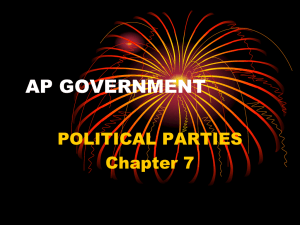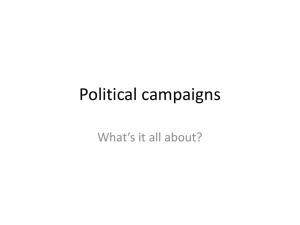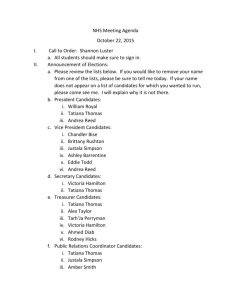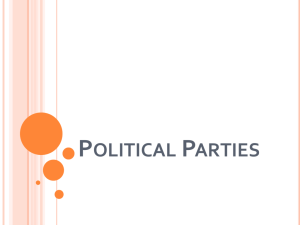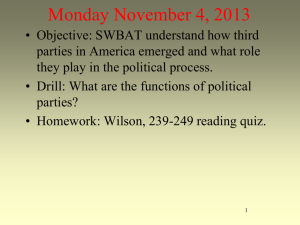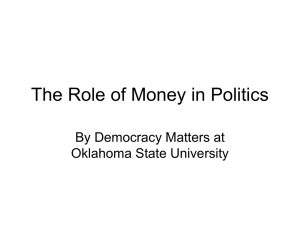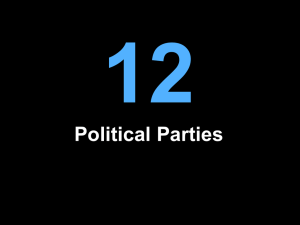Name
advertisement
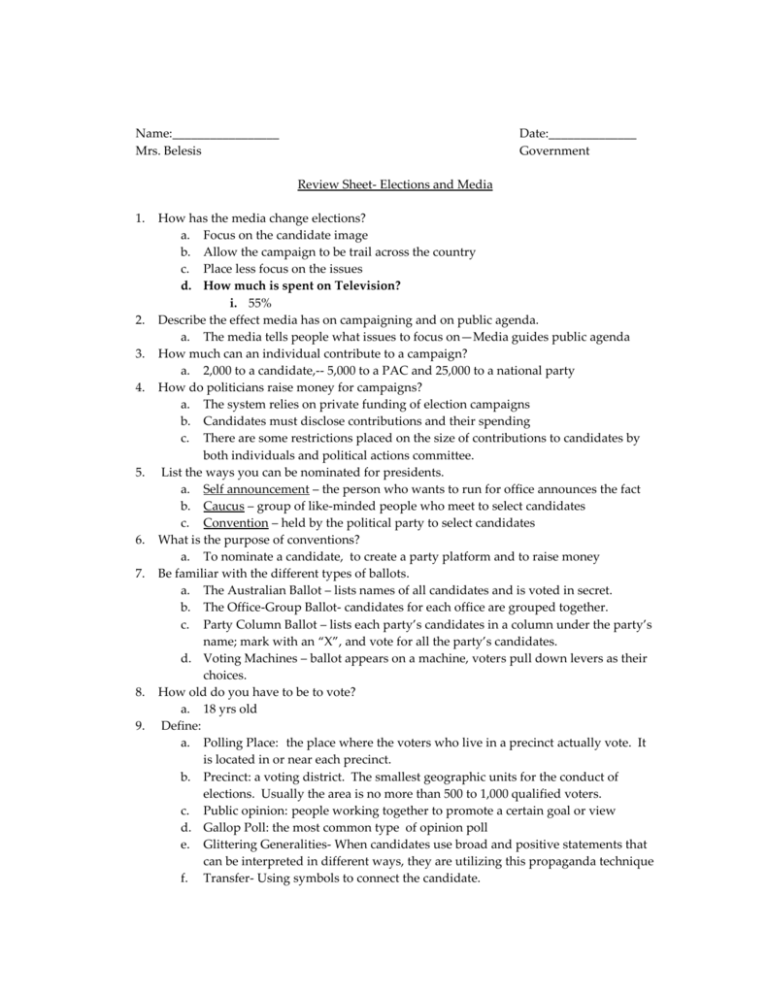
Name:_________________ Mrs. Belesis Date:______________ Government Review Sheet- Elections and Media 1. 2. 3. 4. 5. 6. 7. 8. 9. How has the media change elections? a. Focus on the candidate image b. Allow the campaign to be trail across the country c. Place less focus on the issues d. How much is spent on Television? i. 55% Describe the effect media has on campaigning and on public agenda. a. The media tells people what issues to focus on—Media guides public agenda How much can an individual contribute to a campaign? a. 2,000 to a candidate,-- 5,000 to a PAC and 25,000 to a national party How do politicians raise money for campaigns? a. The system relies on private funding of election campaigns b. Candidates must disclose contributions and their spending c. There are some restrictions placed on the size of contributions to candidates by both individuals and political actions committee. List the ways you can be nominated for presidents. a. Self announcement – the person who wants to run for office announces the fact b. Caucus – group of like-minded people who meet to select candidates c. Convention – held by the political party to select candidates What is the purpose of conventions? a. To nominate a candidate, to create a party platform and to raise money Be familiar with the different types of ballots. a. The Australian Ballot – lists names of all candidates and is voted in secret. b. The Office-Group Ballot- candidates for each office are grouped together. c. Party Column Ballot – lists each party’s candidates in a column under the party’s name; mark with an “X”, and vote for all the party’s candidates. d. Voting Machines – ballot appears on a machine, voters pull down levers as their choices. How old do you have to be to vote? a. 18 yrs old Define: a. Polling Place: the place where the voters who live in a precinct actually vote. It is located in or near each precinct. b. Precinct: a voting district. The smallest geographic units for the conduct of elections. Usually the area is no more than 500 to 1,000 qualified voters. c. Public opinion: people working together to promote a certain goal or view d. Gallop Poll: the most common type of opinion poll e. Glittering Generalities- When candidates use broad and positive statements that can be interpreted in different ways, they are utilizing this propaganda technique f. Transfer- Using symbols to connect the candidate. g. Plain Folks- When politicians attempt to act like the people. (waiting online for burgers, jogging etc.) h. Testimonial – Being endorsed by a celebrity. i. Bandwagon- This technique appeals to peoples’ desire to follow the crowd. j. Card Stacking- An apparently logical argument that usually entices fear. k. Open Primary: Everyone, regardless of political affiliation, can vote. l. Closed Primary: A type of primary where only declared party members can vote m. Hard Money: Money regulated by the federal government n. Soft money: These funds are raised and spent by the political parties for political party building purposes. – Unregulated Open primaries: Pros: Voters do not have to make party preferences known in public Includes independent voters Cons: Permits “raiding” Undercuts party loyalty and responsibility Closed Primaries: Pros: Prevents other party from “raiding” the other’s primary in hope of nominating weaker candidates Helps make candidates more responsive to their party Cons: Excludes independent voters from nomination process Forces you to make your political party known in public
